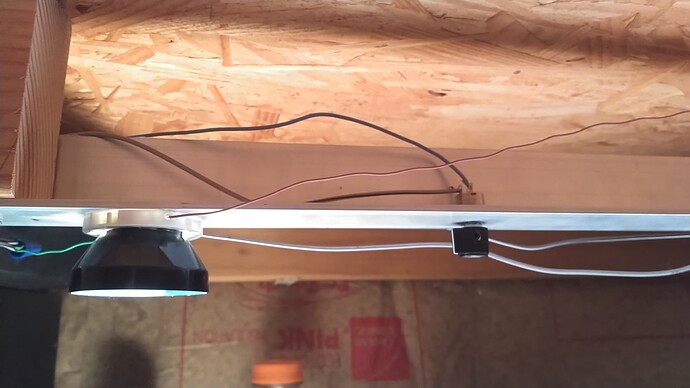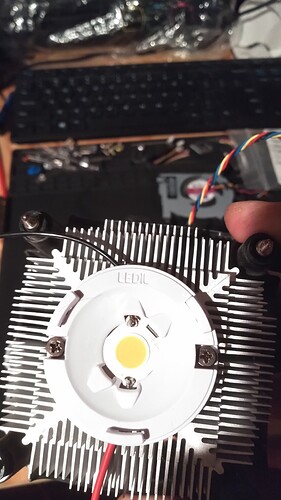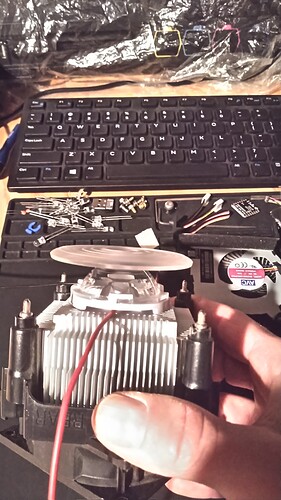Thanks for the article link.
not encouraging news
Its like telling me not to buy High CRI, because Low CRI is more efficient.
The dream comes true… bright blue future,… meal made from insects,… ;))
This isnt surprising, unfortunately. The US govt never thinks about how their actions will affect the people and just push for what they want. As long as it gets them more money, that is all they care about.
This reminds me a lot of the EU’s push for diesel cars during the 1990s. They did it as an attempt to cut CO2. While it was true that diesel put out less carbon dioxide per mile then gas, diesel also pumped out a lot more NOx and other toxic emissions. Those other emissions led to a string of nasty side effects including acid rain and higher rates of lung disease. They fixate on one issue-- lumens per watt-- and completely ignore all the others-- the myriad of health issues, flicker, power factor, color rendering, and red content.
If they were really concerned about efficiency and saving power they would be do far better addressing over-lighting and un-sheilded lighting outdoors. Really, just pushing the IDA’s Principles of Responsible Outdoor lighting would not only cut power use, but it would reduce the negative health effects of the lights to. Over-lighting in interior lights is another one of my sticklers. I see it very often with LED, a hallway lit to 30/50 foot candles when a max of 10 is the IES standard.
Btw, you can buy the Sunlike bulbs again! I might wind up stocking up on those and some spare parts to keep my lighting going. I’ve also found that you can buy the bulb shells online on aliexpress, like flashlight hosts. You can also get the drivers on the same store, again like a flashlight. It looks like it’s possible from there to purchase the emitters on aliexpress or mouser. You just have to make sure you’re matching the driver voltage, and pay attention to the drive current to give you your wattage.
If the worst comes to pass, I’ll make my own bulbs or have someone like Vinh assemble them for me with my own custom emitter choice.
Unintended consequences at its finest.
Someone’s going to come up with amber shields to stick over lightbulbs and kill off most/all the blue while letting the rest shine through, ideally “shaping” the spectrum with a scalpel vs a sledgehammer, but either way, I expect to see them come to market.
Then people will stick them over those nice “efficient” bulbs and reduce their efficiency, spurring people to use 60s instead of 40s, and 100s instead of 60s, etc. Overall power usage will go up instead of down.
I just “stocked up” on a bunch of LED blubs in nice high CRI and low CT, thinking I probably got way more than I’d ever need. Meh, maybe not.
I’m thinking of stocking up to, but I want to see if I can take the repair-ability route. I mean if we can buy high CRI emitters and bulb parts online, then why limit ourselves?
What really sucks about the filters is that you aren’t getting the red out of the spectrum. You’ll wind up with a sickly yellow green without violet, cyan, red. The light will look really off, and I don’t know if I could see most taking this route. They put 4000K cool white lights in the apartment building next to me, and it seems that most people either don’t bother or know that they can change the light to something nicer.
Btw, if you account for system losses through heat, optics, and drivers the LEDs themselves would have to hit 150 lpw to meet the 120 lpw standard, see page 8 here. So it’s even worse then it looks. IIRC the 2250K Sunlike bulbs had a total system efficacy of 66 lpw. That hurts. I don’t even think the 3000K ones would meet the standard either.
I’m of the opinion that screens - and lack of discipline around their usage - are a larger factor in modern humans’ circadian rhythm disruption than light bulbs.
Screens? Like, to keep bugs out when the windows are open?
Screens like what you’re viewing BLF on - bey they the black mirror in our hands, computers, TVs.
I get it. High cri warm tints are much less energy efficient than R70 cooler tints, or even R70 warmer tints. I think their target of 120 lm/w is unrealistic aince thats only attainable with low cri and cool cct. Daylight is between 4900 and 5200K, so if you can get to even 5000K and 90 CRI which is totally doable at okay efficiency then I don’t see the issue. Our flashlight LEDs can do that. Maybe it has more to do with cost? I personally don’t like cool cct for indoor lightning. Too harsh and bad bad bad for your eyes and circadian rhythm (insomnia). Thats why streetlights are warmer CCTs because it’s so hard on eyes and glare
I installed cob leds and ledil lenses in my garage. I’m also building a reading lamp for my daughter with them. Cree is claiming “up to” 170lpw with their newest pro9 series. I don’t know what drive current that is, but it sounds good for 90-95 cri offerings. If you like the DIY approach, you can alwasy go that route. The biggest issue I have found so far is most lenses are ~60* or less beam angle. I would like to install them in our basement, and I think I need around 90* or so. I don’t know how to read the photometric files, and don’t have time to learn, so eventually I will order a few to try first.
That’s what I’m noticing on a lot of these DIY bulb hosts. The dome doesn’t seem large enough. They look more like par lamps with a sag lens. Like it only goes halfway like on these hosts. Though these hosts look a lot better and more omni-directional.
I’m thinking of combining the 9 watt host in the second link with this driver and this Cree CXA emitter. That should yield around a 450 lumen bulb but with 95 CRI and over-spec’d cooling as the light would only be drawing 6 or less watts.
The latest Cree developments have me hopeful. I’m also hoping 2400K and 2200K will still be viable in the future to. Leotek’s Green Cobra streetlight manages 140 LPW at 2200K, so I am hopeful.
So I was going through the DOE’s idiocracy. And it looks like higher output lamps must meet much higher efficiency standards. A 40 watt equivalent lamp must only be around 83 LPW, but a 60 watt lamp must be north of 120 lpw. The most obscene requirement of 133 lpw is for the 100 watt equivalent lamps. So it seems that those that use brighter lights may be penalized with worse quality light. This might also lead to a surge in cool white/low-CRI high output lights, not a good thing for light pollution.
The DOE also wrongly estimated how many GSL’s are in a household, at least in my case. They guessed 50 bulbs average. I’m only around 26 bulbs total, at least 10 of those are decorative lamps. The DOE also didn’t factor in wasted light through over-lighting, and while their paper touts big looking numbers cutting wasteful outdoor lighting would yield far higher gains then ruining light in peoples’ homes.
But the most egregious claim that most consumers “prefer” 80 CRI is gross. Most people don’t understand CRI, and the DOE is preying off of the weak and under-educated. If more people knew how much better 90 and 95 CRI lamps were, they would not go back to 80 CRI.
It’s been my observation that light bulbs are a low involvement purchase for the average consumer. Habituation cannot be relied upon since the incandescent lamp has largely disappeared, individual SKUs now have short market lifespans, and LED lasts considerably longer. Much like we saw with CFLs as they became popular, the decision seems to merit less than a minute’s worth of time, with purchase price being a significant metric.
Retailers know this so they position house brands on the (proverbial) right with simple, consistent … eh … design language on the packaging that shifts little year to year, easy-to-scan facing, distinguishing primarily on formfactor, wattage, CCT. Occasionally some claims about “light quality” - perhaps even a CCT rating. I’ve noticed that the store brands are faster to explore ‘new’ CCTs than the name brands.
Name brands make some effort at distinction, but they also seem to revamp packaging often, making more elaborate claims as to how spending more gets you more. Occasionally some of the appeals to better TCO beyond the standard Lighting Facts label. Name brand means something to a slice of the market so some will gravitate to GE/Philips/Cree (or what’s left of them) but the decision is a little harder than with the store brands.
But man is upfront cost something I’ve seen much complaining about. A price difference of less than a dollar has seen many a name-brand light left on the shelf in favor of the store brand. And despite CFLs making a wide range of CCTs available and generally described with semistandard DAYLIGHT/BRIGHT WHITE/SOFT WHITE (5000/3000/2700) and occasionally COOL WHITE/TRUE WHITE (4000/3500) it’s still a source of confusion.
I have a box full of 60w incans from the first transition. Back when they were cheap. And a nasty blue LED cost 12 bucks.
Guess there is soon to be a box of high CRI Phillips in the closet too.
Also there are some really nice bulbs at COSTCO.
All the Best,
Jeff
Wow, so much criticism of the DOE’s decisions peppered with accusations that everyone at DOE is stupid or corrupt or both…from people who are taking seriously a click-bait article on the DOE’s decision posted by Psychology Today - a publication not known as a good source of information about U.S. government agency actions and the reasons for those actions. In reality, the article linked in the original post was written by a guy who cites his own previously-published article as the source of the claims he makes about the connection between blue light and health issues - an article which I looked up. The source article claims that blue light causes colon cancer, breast cancer, diabetes, heart disease, and other health problems, aside from simply disrupting circadian sleep cycles.
While there is evidence for (all) light from computer and other device screens disrupting circadian sleep patterns in humans, there is no scientific or clinical evidence supporting the many other health-effect claims made by the author about the health effects of blue light. It is easy to look up the organization the author of the article works for - and to see that it is an organization that has a financial interest in higher-CRI light bulb promotion. That doesn’t make the linked article real helpful in providing information on the basis and value of the regulations at issue.
By the way, an estimate is based on aggregate data and used to develop statistical models - they are not based on what one person does in their home. So, claiming that an estimate used by the government is “idiotic” because it doesn’t match what you do in your own home makes no sense.
To be fair, there’s very little I’ve seen coming from government that isn’t idiotic.
And/Or corrupt.
My only issue with stocking up is that I have no idea how long my stash would last. Ie, hotwire bulbs were fairly predictable, but CFL/LED is unpredictable at best, with not the emitter (tube or chips) being the weak link, but the driver electronics.
Early CFLs lasted nigh forever. I’ve got an ancient 28W (100W/150W equivalent, forgot which) CFL with the 2 long U-shaped tubes, that Just Will Not Die. Been in-use in the living room for… I actually have no idea how long.
Similar ancient ones that are tube-down in recessed fixtures similarly won’t die but rarely. That’s supposedly the worst position for them, as heat “rises” to the bottom where the electronix are. And yet…
More “modern” CFLs might last only a few months to a year before they start fizzing and let out the Magic Smoke.
So I could be replacing CFLs with short-life LEDs and run through my stash fairly quickly, or they might last quite a while and last me a lifetime. Who knows…


